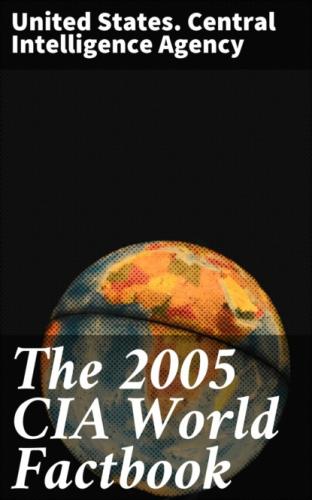land: 245,857 sq km
water: 0 sq km
Area - comparative:
slightly smaller than Oregon
Land boundaries: total: 3,399 km border countries: Cote d'Ivoire 610 km, Guinea-Bissau 386 km, Liberia 563 km, Mali 858 km, Senegal 330 km, Sierra Leone 652 km
Coastline: 320 km
Maritime claims: territorial sea: 12 nm exclusive economic zone: 200 nm
Climate:
generally hot and humid; monsoonal-type rainy season (June to
November) with southwesterly winds; dry season (December to May)
with northeasterly harmattan winds
Terrain:
generally flat coastal plain, hilly to mountainous interior
Elevation extremes:
lowest point: Atlantic Ocean 0 m
highest point: Mont Nimba 1,752 m
Natural resources:
bauxite, iron ore, diamonds, gold, uranium, hydropower, fish, salt
Land use: arable land: 3.63% permanent crops: 2.58% other: 93.79% (2001)
Irrigated land:
950 sq km (1998 est.)
Natural hazards:
hot, dry, dusty harmattan haze may reduce visibility during dry
season
Environment - current issues:
deforestation; inadequate supplies of potable water;
desertification; soil contamination and erosion; overfishing,
overpopulation in forest region; poor mining practices have led to
environmental damage
Environment - international agreements:
party to: Biodiversity, Climate Change, Climate Change-Kyoto
Protocol, Desertification, Endangered Species, Hazardous Wastes, Law
of the Sea, Ozone Layer Protection, Wetlands, Whaling
signed, but not ratified: none of the selected agreements
Geography - note:
the Niger and its important tributary the Milo have their sources
in the Guinean highlands
People Guinea
Population:
9,467,866 (July 2005 est.)
Age structure:
0–14 years: 44.4% (male 2,123,207/female 2,079,475)
15–64 years: 52.4% (male 2,478,820/female 2,486,300)
65 years and over: 3.2% (male 131,130/female 168,934) (2005 est.)
Median age:
total: 17.67 years
male: 17.42 years
female: 17.93 years (2005 est.)
Population growth rate:
2.37% (2005 est.)
Birth rate:
42.03 births/1,000 population (2005 est.)
Death rate:
15.38 deaths/1,000 population (2005 est.)
Net migration rate:
−2.99 migrant(s)/1,000 population
note: as a result of conflict in neighboring countries, Guinea is
host to approximately 150,000 Liberian and Sierra Leonean refugees
(2005 est.)
Sex ratio:
at birth: 1.03 male(s)/female
under 15 years: 1.02 male(s)/female
15–64 years: 1 male(s)/female
65 years and over: 0.78 male(s)/female
total population: 1 male(s)/female (2005 est.)
Infant mortality rate:
total: 90.37 deaths/1,000 live births
male: 95.82 deaths/1,000 live births
female: 84.76 deaths/1,000 live births (2005 est.)
Life expectancy at birth:
total population: 49.36 years
male: 48.19 years
female: 50.57 years (2005 est.)
Total fertility rate:
5.83 children born/woman (2005 est.)
HIV/AIDS - adult prevalence rate:
3.2% (2003 est.)
HIV/AIDS - people living with HIV/AIDS:
140,000 (2003 est.)
HIV/AIDS - deaths:
9,000 (2003 est.)
Major infectious diseases:
degree of risk: very high
food or waterborne diseases: bacterial and protozoal diarrhea,
hepatitis A, and typhoid fever
vectorborne diseases: malaria and yellow fever are high risks in
some locations
water contact disease: schistosomiasis
respiratory disease: meningococcal meningitis
aerosolized dust or soil contact disease: Lassa fever (2004)
Nationality:
noun: Guinean(s)
adjective: Guinean
Ethnic groups:
Peuhl 40%, Malinke 30%, Soussou 20%, smaller ethnic groups 10%
Religions:
Muslim 85%, Christian 8%, indigenous beliefs 7%
Languages:
French (official), each ethnic group has its own language
Literacy:
definition: age 15 and over can read and write
total population: 35.9%
male: 49.9%
female: 21.9% (1995 est.)
Government Guinea
Country name:
conventional long form: Republic of Guinea
conventional short form: Guinea
local long form: Republique de Guinee
local short form: Guinee
former: French Guinea
Government type:
republic
Capital:
Conakry
Administrative divisions:
33 prefectures and 1 special zone (zone special)*; Beyla, Boffa,
Boke, Conakry*, Coyah, Dabola, Dalaba, Dinguiraye, Dubreka, Faranah,
Forecariah, Fria, Gaoual, Gueckedou, Kankan, Kerouane, Kindia,
Kissidougou, Koubia, Koundara, Kouroussa, Labe, Lelouma, Lola,
Macenta, Mali, Mamou, Mandiana, Nzerekore, Pita, Siguiri, Telimele,
Tougue, Yomou
Independence:
2 October 1958 (from France)
National holiday:
Independence Day, 2 October (1958)
Constitution:
